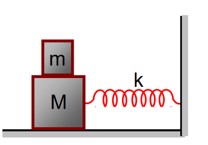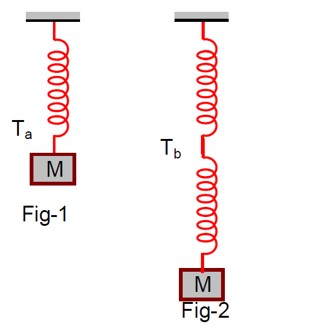14.4 Which of the following functions of time represent (a) simple harmonic, (b) periodic but not simple harmonic and (c) non-periodic motion? Give period for each case of periodic motion ( is any positive constant):
(a) Sin t – cos t
(b) Sin3
t
(c) 3 cos ( /4 – 2 t)
(d) Cos t + cos 3 t + cos 5 t
(e) Exp (– 2t2)
(f) 1 + t +
2t2
14.4 Which of the following functions of time represent (a) simple harmonic, (b) periodic but not simple harmonic and (c) non-periodic motion? Give period for each case of periodic motion ( is any positive constant):
(a) Sin t – cos t
(b) Sin3 t
(c) 3 cos ( /4 – 2 t)
(d) Cos t + cos 3 t + cos 5 t
(e) Exp (– 2t2)
(f) 1 + t + 2t2
-
1 Answer
-
(a) The given function is sin t – cos t
= =
= )
This function represents SHM as it can be written in the form: a sin ( t + )
Its period is . It is periodic, but not SHM
(b) Sin3 t =
The terms t and t individually represents simple harmonic motion. However, the superposition of two SHM is periodic but not simple harmonic.
(c) The given function is 3 cos ( /4 – 2 t) = -3cos(2 t - /4)
This function represents simple harmonic motion because it can be written in the form: a co
...more
Similar Questions for you
Velocity of block in equilibrium, in first case,
Velocity of block in equilibrium, is second case,
From conservation of momentum,
Mv = (M + m) v’
f? = 300 Hz
3rd overtone = 7f? = 2100 Hz
Kindly consider the following figure
K = U
½ mω² (A² - x²) = ½ mω²x²
A² - x² = x²
A² = 2x²
x = ± A/√2
Taking an Exam? Selecting a College?
Get authentic answers from experts, students and alumni that you won't find anywhere else
Sign Up on ShikshaOn Shiksha, get access to
- 65k Colleges
- 1.2k Exams
- 679k Reviews
- 1800k Answers


